My Book Review of Fire and Fury: Transforming India's Strategic Identity by Anil Kakodkar and Suresh Gangotra in Rediff.com
https://www.rediff.com/news/column/oh-you-are-kakodkar-president-bush-exclaimed/20191130.htm
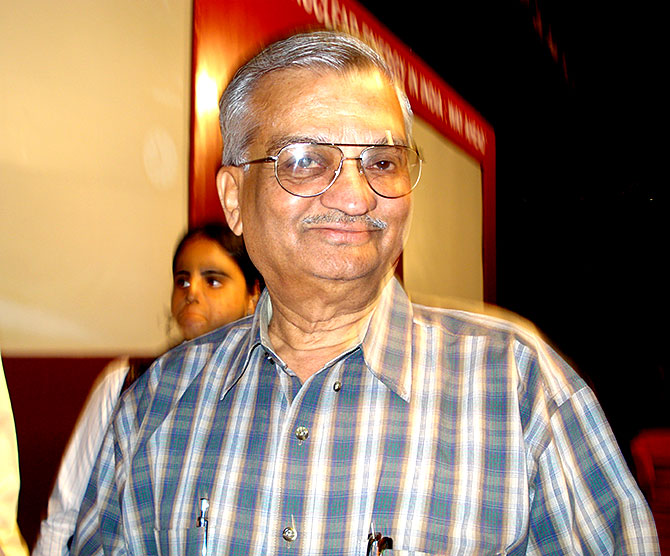

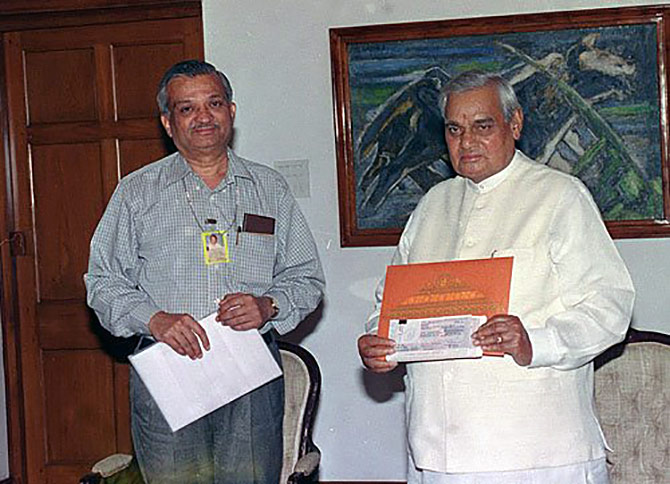
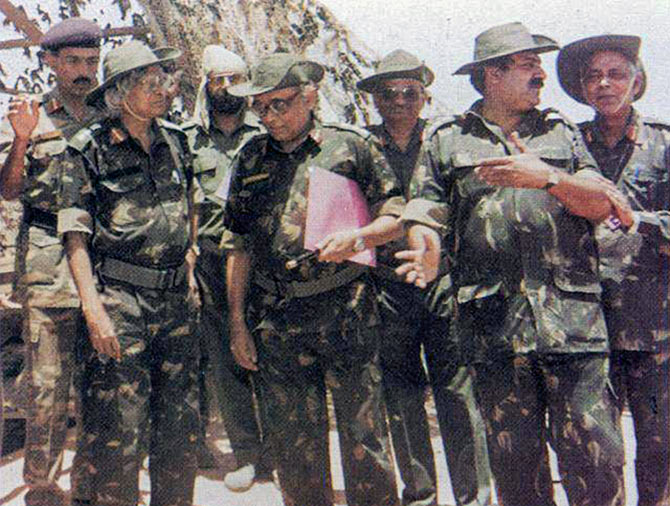
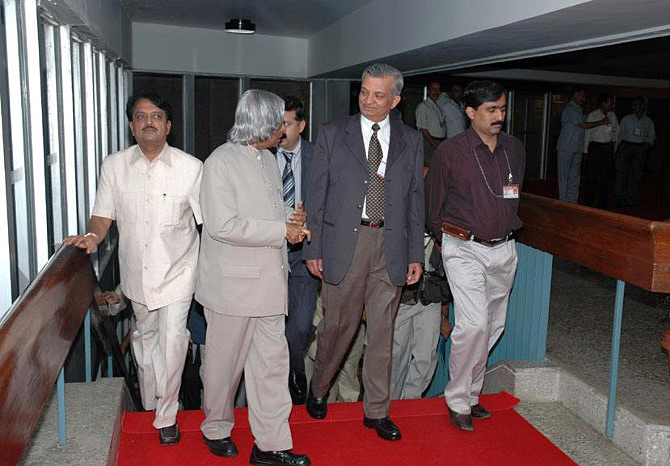

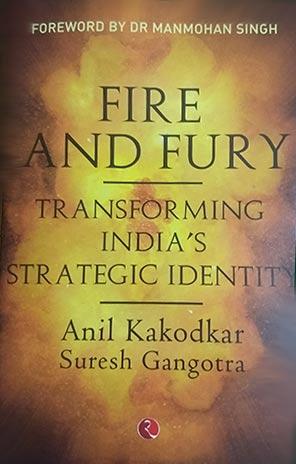
https://www.rediff.com/news/column/oh-you-are-kakodkar-president-bush-exclaimed/20191130.htm
'Oh, you are Kakodkar!', President Bush exclaimed
November 30, 2019 18:19 IST
Dr Kakodkar's strategic stubbornness ultimately got India what it wanted though the negotiations with the US went to the wire, notes Shivanand Kanavi.

IMAGE: Then India's Atomic Energy Commission chairman Dr Anil Kakodkar.
Former chairman of the Atomic Energy Commission Dr Anil Kakodkar has written his memoir Fire and Fury: Transforming India's Strategic Identity (Rupa, 2019) with assistance from his colleague Suresh Gangotra.
It is natural that it would invoke huge amount of interest in anyone following the evolution of India's nuclear programme for both energy and security.
Kakodkar is a nextgen nuclear engineer, following the pioneers Dr Homi Bhabha, Dr Homi Sethna, Dr Raja Ramanna, Dr P K Iyengar and Dr R Chidambaram.
He joined the department of atomic energy in the early sixties as a freshly minted bright mechanical engineer from Mumbai's VJTI and topped his batch at the Atomic Energy Training School.
However his confidence in hands on problem solving and 'can do' attitude drew the seniors's attention quite early.
Sponsored
Soon he was given the first major independent project to architect and build the research reactor Dhruva in the eighties.
Dhruva has been a workhorse since then for the DAE not only in research, but also as a steady supplier of bomb grade plutonium.

IMAGE: Dr Kakodkar with then prime minister Atal Bihari Vajpaye. Photograph: Kind courtesy Anilkakodkar.in
He has participated in trouble shooting and ultimately fixing several problems in the power reactors which were caused by design deficiencies in the Canadian natural uranium based 220 MW, PHWRs (Pressurised Heavy Water Reactors).
There were problems with the sagging coolant channels, cracks in the calandria and even the distribution manifold of Madras, (Kalpakkam) reactors which had collapsed.

IMAGE: Before the Pokhran-II tests on May 11, 1998. Photograph: Kind courtesy Anilkakodkar.in/
These were complex engineering and metallurgical problems.
Having been denied any help from the sulking Canadians after the 'peaceful nuclear explosion' of May 18, 1974 at Pokharan, Indian engineers painstakingly analysed and solved the problems much to the surprise of the Canadians and in fact have turned out to be global experts in coolant channel replacement for natural uranium reactors.
Raja Ramanna, who started the nuclear device design in early seventies at Indira Gandhi's behest, recruited young Kakodkar in 1972 for his engineering skills into the hush-hush project.
Much to Dr Kakodkar's bewilderment before recruiting him, Dr Ramanna wanted to make sure that he did not talk in his sleep! Just to make sure that the secret project did not leak even within team members's families.

IMAGE: Dr Kakodkar with President A P J Abdul Kalam. Photograph: Kind courtesy Anilkakodkar.in/
Dr Kakodkar is a man of few words.
You can see that in all the television interviews that he has given in the last couple of decades.
He weighs his words and is not at all dramatic in his demeanour much to the disappointment of television journalists looking for sound bytes.
But in his understated way he recounts in the book many incidents that happened during the test in 1974 as well as the weapon tests in 1998.
He also lays to rest in an emphatic manner the controversy that erupted about whether India indeed tested a thermonuclear bomb in 1998.
During the India-US nuclear negotiations he was always the 'go to man' for the ministry of external affairs due to the implicit faith that then prime minister Dr Manmohan Singh placed in him to protect the long term strategic interests of India and not be pressured by the acute Uranium shortage that the country faced then.
In fact, Dr Kakodkar appeared at one time as a stubborn stumbling block not only to the American negotiators, but also to the eager beavers in the MEA who thought India is looking cussedly at a gift horse in the mouth.

IMAGE: Dr Kakodkar with then prime minister Dr Manmohan Singh. Photograph: Punit Paranjpe/Reuters
That's because when India was on the eve of getting recognition as a de facto nuclear weapon power without having signed the nuclear Non-Proliferation Treaty, paving the way for lifting all sanctions and restrictions on nuclear trade and in fact all hi-tech trade, a major milestone to be crossed was the 'separation plan' that demarcated what reactors and research facilities would be under IAEA safeguards and which others would be off limits to IAEA inspectors, there by implying a connection to the strategic weapons programme.
Here, Dr Kakodkar backed by the PM, was absolutely uncompromising.
This strategic stubbornness ultimately got India what it wanted though the negotiations went to the wire.
He proudly recounts in the book that when the deal was done, then US President George W Bush shook his hands and exclaimed, 'Oh so, you are that Kakodkar, Are you happy now?', thereby implying that he was aware of the tough role Dr Kakodkar had played in the negotiations.

His memories of his childhood and the hard life the family faced when his freedom fighter father was in Portuguese jail in Lisbon for many years and the appendices by his wife and sister in the book bring out Dr Kakodkar's character and add further value to this memoir.
So far, Dr Raja Ramanna, Dr P K Iyengar and Dr M R Srinivasan are among those who headed the DAE who have written their memoirs.
Written in a simple narrative style and language, uncluttered by data, Dr Kakodkar and Gangotra's Fire and Fury is definitely worth reading by all those interested in India's nuclear programme in its quest for clean electricity and strategic weapons.
Shivanand Kanavi, adjunct faculty at the National Institure of Advanced Studies, Bengaluru, is a former VP, TCS and the author of Sand to Silicon: The amazing story of digital technology and Research by Design: Innovation and TCS.


